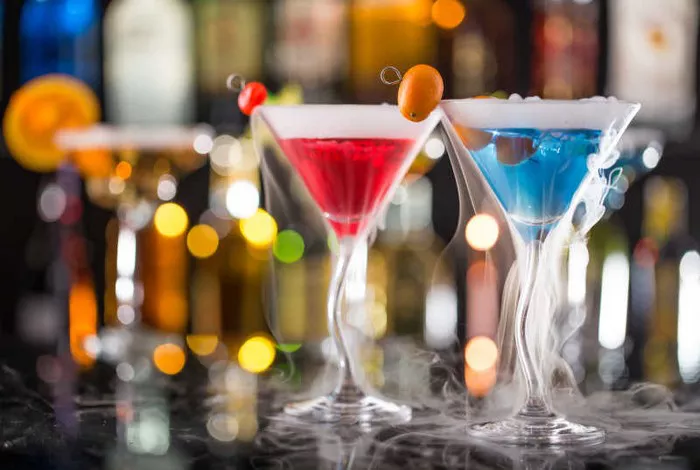When it comes to classic cocktails, the Sidecar stands as a timeless and sophisticated choice. With its intriguing blend of flavors and historical significance, the Sidecar has become a staple in the world of mixology. In this article, we’ll explore the fascinating history of the Sidecar cocktail, the ingredients that make up this delightful concoction, and how to make it yourself. Whether you’re a seasoned cocktail enthusiast or a curious newcomer, the Sidecar is a drink that is sure to captivate your taste buds.
1. Origins and History
The exact origins of the Sidecar cocktail remain a subject of debate among cocktail historians. Several theories attribute its creation to different places and times, but one common thread is its association with the early 20th century and the golden era of cocktails.
One popular narrative suggests that the Sidecar was created in the early 20th century at the Ritz Hotel in Paris. The story goes that the cocktail was named after a motorcycle sidecar, as the original recipe called for equal parts of brandy, orange liqueur (Cointreau or triple sec), and lemon juice. The drink was believed to have been a favorite among American expatriates in Paris during the 1920s.
Another theory places the Sidecar’s creation in London, attributing its invention to a bartender at the Buck’s Club. According to this account, the Sidecar was initially made with gin instead of brandy but later evolved to its more well-known brandy-based version.
Regardless of its exact origins, the Sidecar’s popularity grew rapidly, and it became a classic cocktail found in bars and lounges around the world.
2. The Ingredients
The beauty of the Sidecar lies in its simplicity, requiring only a few high-quality ingredients to achieve its well-balanced flavor profile. The classic Sidecar recipe typically calls for:
– Brandy or Cognac: Brandy serves as the base spirit for the Sidecar. While Cognac, a type of brandy produced in the Cognac region of France, is often recommended for its depth of flavor and complexity, other types of brandy can also be used.
– Orange Liqueur (Cointreau or Triple Sec): The orange liqueur adds sweetness and citrusy notes to the cocktail. Cointreau, a premium orange liqueur, is a popular choice for its high-quality flavor and smoothness. Triple sec is another common option that offers a similar orange essence.
– Lemon Juice: Freshly squeezed lemon juice provides the cocktail with its bright and tangy character. The acidity of the lemon juice balances the sweetness of the orange liqueur and enhances the overall taste of the drink.
3. Variations and Twists
Like many classic cocktails, the Sidecar has inspired numerous variations and modern twists. Mixologists and bartenders have put their creative spin on the classic recipe by incorporating different ingredients and flavor profiles. Here are a few popular variations of the Sidecar:
– Vodka Sidecar: This variation replaces brandy with vodka, offering a lighter and more neutral base spirit. The rest of the ingredients remain the same, maintaining the cocktail’s citrusy and sweet notes.
– Whiskey Sidecar: In this twist, brandy is substituted with whiskey, creating a richer and more robust flavor profile. Bourbon or rye whiskey are commonly used for this variation.
– White Lady: The White Lady cocktail is a variation of the Sidecar that uses gin instead of brandy. The combination of gin, orange liqueur, and lemon juice results in a refreshing and floral cocktail.
– Sidecar Royale: This variation adds a touch of effervescence to the classic Sidecar by topping it with champagne or sparkling wine. The bubbles lighten the cocktail and add a celebratory twist.
– Blood Orange Sidecar: For a seasonal twist, use blood orange juice instead of regular lemon juice. The result is a vibrant and slightly sweeter version of the classic Sidecar.
4. Serving and Enjoying the Sidecar
The Sidecar is best served chilled in a cocktail glass or a coupe glass. The classic garnish for the Sidecar is a twist of lemon peel, which adds a bright and aromatic touch to the drink. If preferred, an orange slice can also be used as a garnish, reflecting the cocktail’s citrusy nature.
When enjoying the Sidecar, take a moment to appreciate its harmonious blend of flavors. The brandy provides depth and warmth, while the orange liqueur adds sweetness and the lemon juice brings a zesty brightness. The result is a perfectly balanced cocktail that is both refreshing and comforting.
5. A Cocktail for All Occasions
The Sidecar’s versatility makes it an ideal cocktail for various occasions. Its elegant and refined character makes it suitable for special events, cocktail parties, and celebrations. At the same time, its simple recipe and delightful flavors make it accessible and enjoyable for casual gatherings or an evening at home.
Whether you’re sipping a classic Sidecar in a vintage-inspired lounge or trying a creative variation at a trendy bar, this timeless cocktail is sure to impress and delight.
Conclusion
The Sidecar cocktail’s enduring popularity is a testament to its timeless appeal and delightful flavors. With a rich history and a simple yet elegant recipe, the Sidecar continues to be a beloved choice among cocktail enthusiasts and mixologists alike.
Whether you’re a fan of brandy, prefer the botanicals of gin, or enjoy the smoothness of vodka, there’s a Sidecar variation to suit every palate. As you venture into the world of mixology, exploring classic cocktails like the Sidecar allows you to appreciate the artistry and creativity behind the bar while enjoying the satisfying experience of a well-crafted drink.
So, the next time you find yourself yearning for a cocktail that marries sophistication with simplicity, look no further than the timeless charm of the Sidecar. Cheers!


